Welcome to another exciting and captivating blog post from wikilifestyles.com
Introduction: Decoding the Mindset of Organized Crime Gangs In India
In the dark underbelly of society, a fascinating yet chilling world exists—the realm of organized criminal gangs. These groups operate with a distinct mindset that sets them apart from conventional criminals. To truly understand their motivations, we must decode the intricate workings of their minds. In this blog “Decoding the Mindset of Organized Crime Gangs”, we embark on a thrilling journey into the mindset of organized criminal gangs, exploring their living conditions, lifestyles, patterns of criminal activities, and the relentless efforts undertaken by authorities to dismantle them.
The Living Conditions of Organized Criminal Gangs:
Organized criminal gangs lead a life that is far removed from the ordinary. Their living conditions often mirror a concealed existence, hidden away in remote locations or densely populated urban areas, adapting to their surroundings with utmost secrecy. The members of these gangs develop a unique code of conduct and loyalty, forming tight-knit bonds that strengthen their criminal enterprise.
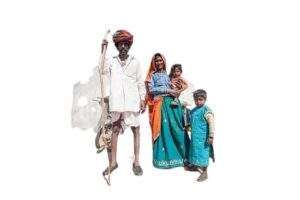
The Bawaria Gang, known for its ruthlessness and versatility, primarily operates in the state of Rajasthan in India. Their living conditions vary depending on their activities and the locations they operate in. In rural areas, they may find shelter in abandoned buildings, remote areas, or makeshift camps hidden from public view. These locations provide them with the necessary cover and seclusion to plan and carry out their criminal activities.
The living conditions of Bawarias is clearly depicted in this YouTube video
Video Courtesy : YouTube
In urban areas, the Bawaria Gang may blend into densely populated neighborhoods, residing in rented apartments or slums. They often maintain a low profile, integrating themselves into the local community to avoid suspicion. By assimilating into the surroundings, they gain access to valuable information and resources while remaining inconspicuous.
Decoding the Style of Organized Criminal Gangs: Danger, Hierarchy, and Family Impact:
The Chaddi Baniyan Gang, characterized by their distinctive choice of attire, also operates under similar living conditions. They are known for committing crimes while wearing only underwear, which has earned them their name. Their living arrangements are typically transient, as they move from one location to another to evade capture. They may stay in cheap lodges, abandoned buildings, or even in open spaces, constantly on the move to escape detection.
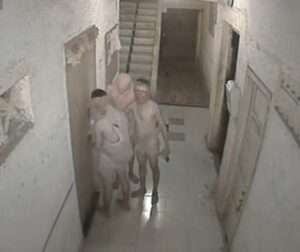
Both the Bawaria Gang and Chaddi Baniyan Gang develop a unique code of conduct within their criminal enterprises. Loyalty and trust are paramount, leading to the formation of tight-knit bonds among gang members. This cohesion ensures their collective survival and facilitates the execution of criminal activities with minimal risk.
The living conditions of these gangs are often characterized by constant fear and the need for vigilance. They are always aware of the potential threats from rival gangs, law enforcement agencies, and the consequences of their criminal actions. This environment fosters a heightened sense of danger and necessitates meticulous planning to minimize the chances of detection.
It is important to note that the living conditions of these gangs are illegal and pose a significant risk to the individuals involved as well as the communities they operate in. Law enforcement agencies strive to dismantle these criminal networks, disrupt their operations, and bring the perpetrators to justice to ensure the safety and well-being of society as a whole.
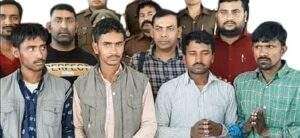
Organized criminal gangs lead a distinct lifestyle characterized by constant danger and a relentless pursuit of wealth. Operating under a strict hierarchy, these gangs have influential leaders who make critical decisions and enforce discipline. Living in secluded locations, gang members prioritize secrecy, while some flaunt their wealth. Charismatic leaders mediate conflicts and maintain unity within the gang. However, this lifestyle also impacts family dynamics, leading to dual lives, isolation, and financial support for their families. Explore the intriguing world of organized criminal gangs, where danger, power, and family intertwine.
Patterns of Criminal Activities:
Organized criminal gangs operate with distinct patterns, employing unique strategies to carry out their activities. Let’s delve into the specific patterns of notorious gangs like the Bawaria Gang, Chaddy Baniyan Gang, and Lorry Gang, exploring their preferred targets and operating styles.
Bawariyas:
Bawariyas, notorious criminal gangs, are well-known for their strategic attacks on houses located in vacant areas near highways or railway tracks. These gangs employ a systematic approach, with Bawariya women playing a crucial role in surveying and identifying potential targets. Disguised as utensil or cloth sellers, they discreetly gather information about the houses they plan to attack. Surprisingly, even children are involved in the surveying process, making their operations more intricate.

Before embarking on their criminal endeavors, the gang members choose a specific spot near highways or railways where the women bid them farewell ceremoniously. After a period of 15-20 days, they reunite at the designated spot to divide their ill-gotten gains.
During their attacks, the Bawariyas aim for the head, seeking to incapacitate their victims quickly. To avoid being traced or identified, they deliberately leave behind their weapons and mobile devices at the crime scene. Interestingly, arrested Bawariyas have remained tight-lipped about the rest of their tribe, adding to the enigmatic nature of these criminal networks.
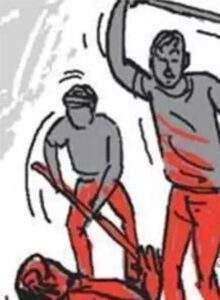
The rainy season holds significance for the Bawariyas as they view it as an auspicious time to carry out their crimes. It is believed that they apply oil on their bodies to facilitate easy escape if someone attempts to apprehend them. Moreover, when confronted, Bawariyas display no hesitation in resorting to lethal force. In recent years, they have adapted to modern techniques, utilizing trucks or cars as getaway vehicles, using mobile phones for communication among gang members, and even acquiring advanced weaponry.
Notably, Bawariyas have expanded their operations beyond their home territories. Between 1995 and 2005, they were active in southern India, primarily targeting cities while posing as truckers supplying goods to factories. They would hide their weapons, such as crowbars and guns, inside the trucks and strike at specific areas during their return journey. Looting is their primary objective, encompassing various methods like chain snatching, ATM robberies, and targeting pawn and jewelry stores.
Interestingly, these criminal gangs have evolved their transportation methods. Apart from conventional modes like trains, buses, and lorries, they have now resorted to air travel for their operations, swiftly flying into a city, carrying out the crime, and promptly leaving the scene. Their well-planned exit strategies contribute to their elusive nature and make them challenging to apprehend.
The Bawariyas exemplify the sophisticated tactics and adaptability of organized criminal gangs. By understanding their operations, law enforcement agencies can develop effective strategies to counter their activities, ensuring the safety and security of communities.
Kuruva Gang:

Operating in ‘Thiruttu’ village’ primarily in districts like Thiruchirappally, Tamil Nadu, the Kuruva Gang comprises youth aged 19 to 59. Armed with traditional weapons like swords, knives, daggers, spears, and sickles, these gang members engage in robberies. Their targets are usually uninhabited houses lacking surveillance cameras or security systems. Each theft is meticulously planned after extensive observation, with an uptick in thefts correlating to the rise in gold prices.
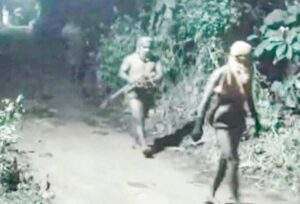
The gang strikes when families are away, visiting relatives or on trips. However, unlike other gangs, the Kuruva Sangha allows for family members’ involvement. In cases of resistance, they resort to extreme violence, including murder. Apprehending these criminals presents a significant challenge as they often hail from different states. Their operations are executed with utmost precision, leaving behind no trace of evidence
Shutter Katwa:
‘Shutter Katwa’ is an infamous organized gang of thieves hailing from the Ghorasahan block of Champaran district in Bihar. This notorious gang has gained nationwide notoriety, with cases registered against them in more than 15 states. Their specialty lies in burglarizing gadget shops, and their criminal activities have left a trail of incidents across the country.
In one such incident reported by the Sikkim police, six members of the ‘Shutter Katwa’ gang targeted Gangtok in early June. Under the cover of night on June 5-6 of year 2022, they executed a daring heist, looting an entire mobile shop. This gang comprises over 250 thieves from the Ghorasahan block, spanning various age groups from teenagers to the elderly. Their extensive criminal record includes over 100 registered cases throughout India, with many remaining unsolved.
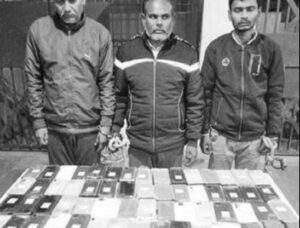
The Gangtok Superintendent of Police (SP) revealed that not all cases attributed to this group have been resolved due to the thieves predominantly selling the stolen mobile phones in Nepal, where Indian police have limited jurisdiction. Operating in well-organized groups, the gang frequently changes their locations to evade authorities. Once the theft is accomplished, one member carrying the stolen goods slips into Nepal while the rest of the gang members are being tracked down. Efforts are underway to apprehend the remaining members and recover the stolen mobile phones, but the majority of their activities are traced back to Nepal.
Investigations into the numerous cases registered across the country, including in Delhi, Uttarakhand, Rajasthan, Karnataka, and other states, are ongoing. Interestingly, the families of the gang members do not perceive theft from large shops as a crime. Instead, they hold their illegal activities in high regard, considering it a means to improve their fortunes. It is worth noting that the gang members often borrow money from fellow villagers as a superstitious gesture before embarking on their infamous missions.
Over the past five years, at least 100 members of the ‘Shutter Katwa’ gang have been apprehended in various states across the country, marking a significant dent in their criminal operations. Efforts to dismantle their network and curb their illicit activities continue as law enforcement agencies strive to bring them to justice.
The Chaddy Baniyan Gang:
The Chaddi Baniyan Gangs, also known as the Kachcha Baniyan Gangs, are notorious criminal groups operating in various parts of India. These gangs gained their name due to their distinct attire of only wearing undergarments while committing crimes. Operating in different states, they employ similar tactics of robbing people. The reason behind wearing only undergarments is to facilitate a quick escape if caught, as they apply oil on their bodies to make them slippery.

Typically, the gang operates in groups of 5-10 members, donning kurtas and lungis. During the day, they gather at transportation hubs or abandoned urban spaces, disguising themselves as beggars or common laborers to identify potential houses to target. Before moving to another town, they attempt to rob multiple homes. Disturbingly, some victims have reported that after a robbery, the gang members would eat food and defecate inside the house.
Video Courtesy : YouTube
During robberies, gang members tie up family members and resort to violence, even murder, when faced with resistance. They arm themselves with rods, axes, knives, and firearms. Additionally, the gang is known to rent cars for transportation and has been suspected of robbing temples. In some instances, gang members have been identified as members of the Phase Pardhi tribe, a Hindu tribe primarily found in Maharashtra and parts of Madhya Pradesh, Gujarat, and Andhra Pradesh.
In the 1990s, the Kachcha or Chaddi Baniyan gang instilled terror in states such as Uttar Pradesh, Madhya Pradesh, Bihar, Maharashtra, Gujarat, and Delhi. The gang carried out numerous crimes in both small and large cities, causing sleepless nights for the residents.
The pattern of robbery employed by the Kachcha or Chaddi Baniyan gang includes targeting deserted houses under the cover of darkness. They tie up any occupants present and engage in acts of murder and rape. Their weapons of choice include guns, rods, and knives. Until 1987, the gang’s activities frequently made headlines in newspapers, but their grip on crime weakened over time, leading to a decline in incidents. However, remnants of the gang continue to operate in certain parts of the country, or it can be said that other thieves have adopted their modus operandi.
Recent crimes attributed to the gang include a series of robberies in the Narela Area of Delhi in 2014, where numerous people were severely injured. In 2016, the gang resurfaced, targeting a family on a highway, subjecting the women present to rape. The involvement of Bawariyas, a nomadic tribe in northern India, was suspected in this crime. In 2021,
Chaddi gang members apprehended in Delhi revealed that they would survey deserted houses under the pretext of collecting garbage or setting up vegetable carts, enabling other gang members to carry out night-time robberies. They would gain entry by removing window grills and breaking doors. Notably, the gang includes children, teenagers, and women, who initially target houses using slingshots to determine if anyone is present.
Overall, the Chaddi Baniyan Gangs or Kachcha Baniyan Gangs have left a dark imprint on India’s criminal landscape, perpetrating crimes marked by violence and audacity. While their activities have declined over time, remnants of the gang persist, and similar crimes continue to be carried out using their established pattern.
The Kala Kachcha gang:
The Kala Kachcha gang, also known as the Kale-Kachchewale or Kale Kachche gang, refers to organized criminal groups operating in Punjab, India. These gang members are robbers and dacoits who adopt police uniforms or wear ‘Kale Kachche’ (black underpants) to avoid detection. They apply grease on their bodies as a lubricant.
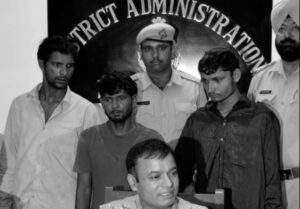
Several such gangs are suspected to be active in Punjab. They primarily target families residing in isolated rural areas and brutally assault their victims before looting them. In 2014, the Mohali police successfully dismantled a gang that was responsible for a series of robberies in the district throughout June and July.Twelve members were arrested while planning another robbery in an abandoned factory.
-
Some notable incidents involving the Kala Kachcha gang include:
- In May 2007, the gang attacked a family in Ladhowal, beating them up, raping two members, and stealing gold jewelry.
- In June 2007, the gang members killed a farmer and robbed his wife of her jewelry after assaulting her.
In December 2002, a retired Deputy Superintendent of Police named Pritam Singh, his wife, and daughter were brutally murdered by Kala Kachcha gang dacoits. - The Punjab Government provided financial assistance of Rs 20,000 to Savitri Devi, whose husband, Ram Chand, was killed during an encounter with the gang in Lachkani village.
- On March 24, 2000, the police busted a Kale-Kachchewale gang involved in several robberies across Jalandhar, Hoshiarpur, Gurdaspur, and Amritsar.
- On October 15, 1999, the Kala Kachcha gang perpetrated a heinous crime, resulting in the loss of two lives, the rape of a woman, and the theft of money and valuable belongings from several houses.They were subsequently sentenced to life imprisonment on April 29, 2007.
- In December 2006, the gang attacked a youth in Bathinda with the intention of extorting funds. The youth was left for dead and later admitted to the hospital.
The activities of the Kala Kachcha gang have caused significant concern in Punjab due to their violent nature and criminal activities. Law enforcement authorities remain vigilant in their efforts to apprehend these gang members and curtail their criminal operations
Relentless Efforts to Dismantle Organized Criminal Gangs:
Authorities tirelessly work to counter these criminal networks. Law enforcement agencies deploy advanced investigative techniques, intelligence gathering, and international collaboration to track and apprehend the members of organized criminal gangs. Police task forces and specialized units are dedicated to understanding their mindset and dismantling their operations, aiming to disrupt their influence and protect communities.
Operation Bawaria
Operation Bawaria was a major operation conducted by the Tamil Nadu Police from 1995 to 2006 to combat organized dacoity, murder, and robbery in residential areas near the National Highway. The operation specifically targeted a notorious group of lorry drivers belonging to the Bawaria community. It was launched in January 2005 following the murder of Sudarsanam, an AIADMK Gummidipoondi MLA, by armed dacoits who targeted affluent houses along the National Highway in Tamil Nadu, Karnataka, and Andhra Pradesh.
The Bawaria criminals were prime suspects in multiple dacoities that resulted in the deaths of prominent individuals, including Thalamuthu Natarajan, the president of the Salem district Congress committee, and Gajendran, a Dravida Munnetra Kazhagam functionary. Their modus operandi involved targeting affluent families while transporting goods in trucks from north to south. After unloading the goods, they would carry out violent attacks, often resulting in fatalities.
In one incident in Sriperumbudur, they killed a schoolgirl and seriously injured her parents during a dacoity. Bawaria, the gang leader, was wanted by the police in nine states for his involvement in around 200 major dacoity cases. One of their recent operations was the murder of AIADMK MLA Sudarsanam in Gummidipoondi, followed by looting his house.
The operation against the Bawaria criminals commenced in January 2005, shortly after the murder of AIADMK MLA K. Sudarsanam. Chief Minister of Tamil Nadu, Jayalalithaa, ordered a rigorous crackdown when armed dacoits targeted affluent houses along National Highways in Tamil Nadu, Karnataka, and Andhra Pradesh. Director General of Police S. R. Jangid, along with Additional Director General of Police Sanjay Arora, led a team to investigate the cases.
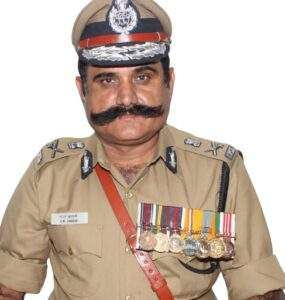
During the investigation, the team identified fingerprints matching the modus operandi of the gang, indicating that the murders were committed by the same group in different parts of India. They collaborated with the Uttar Pradesh Police and central intelligence agencies to gather further information.
Video Courtesy : Youtube
Acting on specific intelligence, the team conducted an early morning raid on a house in Kannauj. With support from the U.P. Special Task Force, they successfully apprehended Bawaria and his wife Beena Devi as they were preparing for a major dacoity nearby. Despite resistance, the police managed to overpower the couple and take them into custody. The accused were subsequently taken to an undisclosed location for interrogation.
Starting from January 2005, the team apprehended ten members of the Bawaria gang in various parts of the country, along with four trucks used by the gang. Following their arrest, no dacoity cases were reported in the northern districts. Over the next eight years, the team relentlessly pursued the remaining gang members and eventually located them in Rajasthan.
Movies and Web Series: Fictionalized Tales of Gangs:
The allure of organized criminal gangs has captivated filmmakers and storytellers, leading to the creation of movies and web series inspired by their exploits. These fictionalized portrayals provide an intriguing glimpse into the world of organized crime and contribute to the perpetuation of their mystique.
Theeran Adhyaayam Ondru
“Theeran Adhyaayam Ondru” is a 2017 Indian Tamil-language action thriller film, also known as “The Warrior: Chapter One”. It was written and directed by H. Vinoth and produced by S. R. Prakashbabu and S. R. Prabhu under the Dream Warrior Pictures banner.
Video Courtesy : Youtube
The film is inspired by the real-life Operation Bawaria case, which revolves around the criminal activities of dacoits, and focuses on the dedicated efforts of the Tamil Nadu Police, led by DGP S. R. Jangid, to apprehend them. The character of Theeran, played by Karthi, is based on Jangid and serves as the lead role. Rakul Preet Singh and Abhimanyu Singh also play significant roles in the movie, including the main antagonist.
Delhi Crime Season 2
The second season of the crime thriller series “Delhi Crime” premiered on August 26 on Netflix. Building upon the success of the International Emmy-winning first season, which focused on the Delhi gang rape, the second season delves into the activities of the infamous ‘Chaddi Baniyan Gang’ or ‘Kachcha Baniyan Gang‘. According to Netflix’s official description, the series draws inspiration from both real and fictional events.
Video Courtesy : Youtube
In this gripping five-episode season, “Delhi Crime” explores the heinous crimes committed by the notorious Kachcha Baniyan Gang during the 90s in Delhi. Drawing from a chapter in former Delhi Police Commissioner Neeraj Kumar’s book, the series takes viewers back into the dark alleyways and criminal underbelly of the city. While the portrayal of violence remains unflinching, the focus is on highlighting the impact of the crimes rather than glorifying the criminals.
The talented writing duo of Mayank Tiwari and Shubra Swarup have crafted an engrossing and captivating series. Director Tanuj Chopra’s skills shine through as he extracts exceptional performances from the cast. Delivering on the high expectations set by this much-anticipated sequel was no easy feat, but Chopra succeeds admirably.
The series features a stellar cast including Shefali Shah, Rasika Dugal, Adil Hussain, and Rajesh Tailang, who deliver outstanding performances, adding depth and authenticity to the storytelling.
Overall, the second season of “Delhi Crime” continues to captivate audiences with its sensitive yet impactful portrayal of crime in Delhi. With a compelling narrative and impressive performances, it proves to be a worthy follow-up to its acclaimed predecessor.
Addressing the Root Causes: Building Safer Communities:
To combat organized criminal gangs effectively, it is essential to tackle the underlying factors that contribute to their existence. By focusing on socio-economic development, education, employment opportunities, and community empowerment, we can work towards building safer and resilient communities that are less susceptible to the influence of organized crime.
Conclusion: Decoding the Mindset of Organized Crime Gangs In India
As we conclude this exploration into the mindset of organized criminal gangs, we are left with a profound understanding of the complexities that drive their actions. Their lives are defined by a combination of factors such as socio-economic conditions, the pursuit of power and wealth, and a lack of opportunities. By examining their mindset, we can strive for comprehensive strategies that address the root causes of organized crime and work towards building safer communities.
Please share your valuable comments in the box below. If you enjoyed this post, there’s another article of similar nature available. You can access it by clicking on the following link.
FAQ:
Q: What are organized criminal gangs?
A: Organized criminal gangs are structured groups of individuals engaging in illegal activities like robbery, theft, drug trafficking, and extortion.
Q: How do organized criminal gangs choose their living conditions?
A: Organized criminal gangs select living conditions that offer secrecy, including remote areas, abandoned buildings, makeshift camps, or rented apartments in urban neighborhoods.
Q: What is the impact of organized criminal gangs on their families?
A: Organized criminal gangs can significantly impact their families, often isolating them, providing financial support, and involving them in criminal activities.
Q: How do organized criminal gangs carry out their activities?
A: Organized criminal gangs employ surveillance, target identification, strategic attacks, disguises, and violence to carry out their criminal activities.
Q: How do law enforcement agencies dismantle organized criminal gangs?
A: Law enforcement agencies dismantle organized criminal gangs by disrupting their operations, arresting key members, and gathering evidence for prosecution through intelligence gathering, surveillance, and collaboration.
Q: Do organized criminal gangs operate in multiple regions or just specific areas?
A: Organized criminal gangs can operate in specific areas or expand their operations across multiple regions, adapting their tactics to different environments.
Q: Are there specific characteristics or codes of conduct within organized criminal gangs?
A: Yes, organized criminal gangs develop unique codes of conduct based on loyalty, trust, and strong bonds among members, enabling them to execute criminal activities with reduced risk.
Q: How do organized criminal gangs evade detection by law enforcement agencies?
A: Organized criminal gangs evade detection by maintaining a low profile, assimilating into communities, frequently changing locations, and using advanced communication techniques.
Q: What are some notable organized criminal gangs in India?
A: Notable organized criminal gangs in India include the Bawaria Gang, Chaddi Baniyan Gang, Kuruva Gang, Shutter Katwa Gang, and Kala Kachcha Gang, each with their own methods and characteristics.
Q: How does understanding the mindset of organized criminal gangs help combat their activities?
A: Understanding the mindset of organized criminal gangs allows law enforcement agencies to develop effective strategies, identify patterns, vulnerabilities, and recruitment tactics, ultimately disrupting their operations and enhancing community safety.

1 thought on “Decoding the Mindset of Organized Crime Gangs”